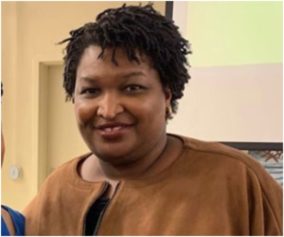The parents of Zachary Hammond, an unarmed white teen killed by South Carolina police in a July drug bust, say his death would’ve garnered more news headlines had he been African-American.
“I believe the national attention would have been quicker responding [if Zachary was Black],” Paul Hammond recently told CNN’s Don Lemon. “I think all young lives matter, not just Black or white. An unarmed teenager, it should matter just as much.”
On July 26, police in Seneca, S.C., gunned down Zachary Hammond, 19, as he sat in his car in a Hardee’s parking lot with date, Toni Morton, 23. Police surrounded Hammond’s car because they reportedly knew that Morton was carrying drugs. But shortly after police approached the car, they fired two shots into the vehicle, killing Hammond.
Lt. Mark Tiller said he fired the shots in self-defense, as Hammond had accelerated his car toward him. Initial Seneca Police reports of the incident did not mention the fired shots or why Tiller felt threatened by Hammond. As a result, Hammond’s family wants the dash cam footage of the shooting released to sort out the contradictions.
“I just don’t feel that the Seneca police department is being honest about a lot of things. Their stories keep changing,” the slain teen’s mother, Angie Hammond, told CNN. “We just lost a lot of confidence—confidence that we did have with the police.”
Paul Hammond added that the family has had “no interaction with the City of Seneca” and that all they know “is that our son was there in the parking lot, and he was shot in the back by a Seneca police officer—unarmed.”
In a statement, the Hammonds expressed fear that their son’s killing wouldn’t be investigated as thoroughly because of his race, echoing their remarks to CNN.
“While many other recent events have involved white on Black police shootings, police brutality and the excessive use of force are race neutral issues,” the statement said. “The Hammond family hopes and trusts that the United States Justice Department will investigate the death of their son with the same intensity and thoroughness as it has demonstrated in other interracial settings. Every death of an unarmed teen, regardless of color, strips a piece of our dignity and humanity as a society.”
Yet on Wednesday, the same day that the Hammonds held a press conference to urge authorities to release dash cam footage of their son’s killing, the United States Department of Justice announced that it would launch a civil rights investigation into the teen’s death. This is comparable to the amount of time it took for the department to launch probes into the deaths of Freddie Gray, who died on April 12, and Michael Brown, who died Aug. 9, 2014. In each of those cases, the Department of Justice announced that they would investigate the police’s actions within a month of the deaths. It took the DOJ nearly five months to probe the death of Eric Garner, who died July 17, 2014. And the DOJ has yet to investigate the arrest and death of Sandra Bland, found hanging in a Waller County, Texas, jail cell on July 13, 2015.
The Hammonds’ comments also overlook that Black Lives Matter activists spread the word about their son’s death on social media, which they grudgingly admitted when Lemon pressed them about the support they received from the movement. If the death of Zachary Hammond didn’t generate as much outrage as recent police killings of African Americans have, it’s not because people care more about police killings of Blacks than they do whites, it’s that the public generally doesn’t view excessive police force as a problem. In spite of the Black Lives Matters movement, the predominant thinking in mainstream America about police killings continues to be that the victims somehow deserved to lose their lives.
Blacks have been killed and brutalized by authorities, white supremacists and vigilantes for centuries in the U.S., but only recently has the media regularly covered violence against Blacks. More than a month passed before police arrested Trayvon Martin’s killer, and there was little public outcry until activists forced the media to act. That was in 2012, revealing that just a few years ago Black lives didn’t matter much to the mainstream press. Since then, news organizations have covered the series of Blacks killed by police and civilians in questionable circumstances because of the movement that’s sprung up to advocate for Black life.
Still, Blacks continue to be killed by police at disproportionate rates. This doesn’t put them in a privileged or advantageous position as the Hammonds suggest. And when non-Blacks die at the hands of police, it shouldn’t be cause for concern that their killings won’t be investigated fairly. Instead, it should be cause for Americans of all races to stand up and support more police accountability and oversight.
While Blacks may be the group most likely to be killed by police, Zachary Hammond’s death serves as a reminder that anyone of any background can be a victim of excessive force.



